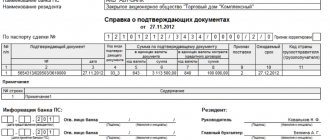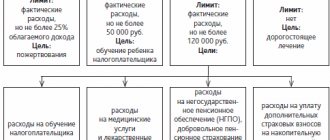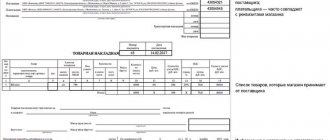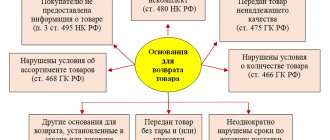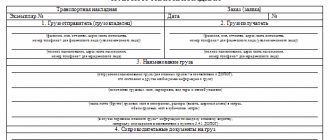During the period of organizing the transportation of various goods both in our country and abroad, one of the most mandatory processes is the formation and preparation of a number of certain papers. Those of them that are transported directly with the cargo represent multilateral information about the nature, quantity and quality of the composition of the transported cargo, and also carry data about the sender and the addressee - who exactly is going to purchase this or that cargo. Such documentation has a general concept and is called shipping papers. However, they are also divided into several groups. Thus, the main types of shipping documents are:
- transport documentation;
- financial documentation;
- permitting documentation.
Transport shipping papers
In this article we will take a thorough look at the first category of papers, they are also shipping documents, or waybills. Without it, cargo transportation is impossible. It involves the most important accompanying act. Depending on the type of vehicle in which the luggage will be transported, the invoice may vary in form and content. Special forms are taken into account for railway, sea and air transportation, but most often the papers are drawn up for the purpose of transportation by road, so we will tell you a little more about the road consignment note, approved in the form in accordance with Appendix No. 4 to the “Rules for the transportation of goods by road”.
This consignment note is drawn up in at least three copies by the sender of the goods. The main copy remains with him, the second is delivered to the recipient of the baggage, and the third is delivered to the carrier. If necessary, the number of copies can be increased. If luggage that is in someone’s individual ownership is being transported, then the invoice is issued by the road carrier.
Shipment of goods from the warehouse: what does it mean?
As the name suggests, it is the process of sending prepared products to the buyer or carrier. The completion of this procedure is the moment when ownership passes from the seller to the buyer.
This becomes clear from Art. 223 of the Civil Code. It states that the parties are free to negotiate as they see fit. The transition can occur at the moment:
- transfer from the supplier personally to the buyer;
- delivery to a certain point, from where the beneficiary will then pick it up with his own transport;
- delivery to the buyer's warehouse.
The owner may change at any of these points depending on what is written in the contract.
It can be concluded that this is a process during which the product is transferred and the owner of the lot changes.
The acceptance certificate is delivered to the recipient along with the goods. It always indicates the place of shipment - this is the legal address to which the courier or vehicle must arrive to deliver the goods sold. In addition, the document specifies all the main characteristics of the cargo:
- weight;
- color;
- marking;
- quantity;
- quality;
- other features that were considered important.
Also, the act always contains an article number, a list of everything that is being transported, a method of packaging and weight without containers. It is drawn up in 3 copies, each signed by both parties. The driver carries one as accompanying documentation, the rest are placed in a box.
Do you want to implement Warehouse 15? Get all the necessary information from a specialist.
Thank you!
Thank you, your application has been accepted!
Signing and contents of the document
This waybill is signed by the baggage addressee and the road carrier, certifying with their own seals. During shipment, a note is placed on it indicating that the baggage has been accepted by the carrier, signed by the driver who accepted the baggage. The consignor, in the presence of the driver, writes down the weight and number of pieces of cargo, its condition, packaging method and sealing data in the consignment note. In addition, the period for accepting baggage for transportation is indicated.
The shipping documents include a list of all other documents accompanying the luggage: certificates, quality passports, manuals, permits, etc. For the transportation of cargo, multimodal transportation can be used, in which various types of vehicles are involved in order. From an aircraft to a dog sled. However, road transport remains the most famous. At the same time, their documentary registration creates a lot of problems for accountants. Solutions to them must be sought in the field of transport law. Meanwhile, even the agencies exercising control are unable to navigate its intricacies. This demonstrates the experience of countless official explanations.
Shipment in databases. Video
Shipment of finished products, in accordance with the concluded contract, in accordance with completeness, quality and quantity, is a responsible process that requires precise execution. Negligence in this matter can lead to damage to the goods, damage or reduction in quality. To avoid subsequently disputes and arbitration claims that recipients may bring against suppliers, the organization of shipment must be competently and carefully developed and carried out.
Acceptable transportation options
To transport commodity cargo, the enterprise has the opportunity to operate individual transport, which is included in the main money - its own or rented. Or he can sign a civil contract with a third-party organization or an individual businessman for the provision of transportation services. However, if the loading position of baggage and its place of delivery, noted in the agreement, are in different countries, then the Convention on the Contract for the International Transport of Goods by Road, which was concluded in Geneva in 1956, is used. We will not analyze such transportation in detail in this article.
Who takes part in transport transportation
The customer provides the service personally, directly providing the shipper with a vehicle for loading. A carrier is a person who directly provides a rather labor-intensive service - organizing transportation. The main requirement of this type of organization is the delivery of luggage to the addressee confirmed by the client. The result is the same as for the carrier. However, to accomplish this, the carrier not only personally delivers the luggage or enters into contracts (in particular, this is a consignment note) with other carriers. It implements a wide variety of additional actions that ensure the transportation of goods. For example, preparing products for transportation, transferring luggage from the first carrier to the second, approving shipping papers, preparing shipping documents, insurance and fulfilling customs formalities.
The road carrier, in addition to transportation, only carries out loading and unloading operations. If the sender of the cargo gives the carrier functions that are uncharacteristic for him, then the court may intervene in the matter, thanks to which the transportation contract will be re-qualified in the future. Of course, this is possible within the framework of a dispute, economic or tax.
A variety of intermediaries also offer services on the motor transport market. They assist in the implementation of certain “related” procedures, without receiving a range of responsibilities to achieve the final mission - handing over the baggage to the consignee. Most often you need to deal with representatives. The goal of the accountant is to ensure the transportation of inventory items with appropriate papers, including shipping documents, on the basis of which the company can, without fear, deduct the submitted tax and accept tax costs as income. For this purpose, the chief accountant is obliged to understand the basics of motor transport operations.
Documentation of cargo transportation
Resolutions and orders of the Government of the Russian Federation appear as an integral part of the legislation on accounting (Article 3 of the Federal Law No. 129 “On Accounting”). As a result, the TN is the initial act for absolutely all participants in commercial transportation - the shipper, carrier and consignee. Countless letters from the Ministry of Finance of the Russian Federation are devoted to the use of TN. Although these are answers to certain taxpayers.
The identified problems are based on a misunderstanding of the differences between the concepts of “TN” and “consignment note”. But in order to build a suitable document flow, it is necessary to accurately understand and understand the purpose of all existing forms of documents.
Instructions for shipment of finished products, goods from warehouse, sample
What rules will be used for loading and dispatch should be clear to all parties to the transaction - the shipper, the carrier and the recipient.
Here are a few requirements that must be met:
- label each unit and batch located in the warehouse;
- be sure to check the nature of the transportation and its volume;
- think about how many pieces of equipment will be needed to complete the task;
- the sender or transport company undertakes to provide the required type of vehicle for transportation on a strictly defined day;
- examine whether the provided vehicle complies with all sanitary and hygienic standards;
- the loading and unloading process can be controlled not only by the carrier, but also by the customer;
- Before dispatch, the mobility of the train is checked;
- each element must be scanned, weighed and measured if necessary;
- fill out papers, submit them by mail or electronically.
If the warehouse has received goods of inadequate quality or not in the quantity in which it should be, then the question arises of what to do. It is important to correctly prepare the accompanying documents:
- If during acceptance it was revealed that instead of 30 copies, only 20 or 15 were received, then the responsible employee is obliged to make an appropriate note. It is necessary to cross out the printed volume and enter the real one. If the positions have not arrived at all, then the line is simply crossed out. In addition, the employee puts his signature. The same is duplicated in the invoice. When accepted with the participation of the driver, it is advisable that he also signs.
- If this is indicated in the order, then you can do it differently. When a specialist from the receiving party realizes that the actual quantity differs from that indicated in the papers, he may refuse to accept the entire batch. In this case, an act is drawn up in the TORG-2 form and the entire receipt is returned to the sender until the causes of the incident are clarified and the shortfall is corrected.
It is important that all boxes are properly labeled and packaged. If the recipient sees the package opened, he may not want to accept the entire volume. Moreover, it is not necessary that this be a defect or directly affect the properties of the product. This will simply be a reason to file a claim, because it is easier for the buyer to draw up a report and not take responsibility for the safety of the cargo. This is more correct than proving later that the container lacked a certain number of parts or components, and the pack was not reliably sealed.
Also, before shipping, it is necessary to check whether the loading rules and the reliability of the fastenings were followed. This will help protect the assortment from unnecessary damage.
There should also be no errors or omissions in the accompanying documents. Everything is drawn up in a readable manner and is also collected according to the invoice. The employee collecting the order carefully checks the completeness, number and quality of the shipped products. To simplify the task and avoid mis-sorting, he should be given a TSD, which will help him scan marked products and collect them according to the sheet.
Characteristics of VT on a specific sample
Let's say a merchant hired a carrier to deliver products to a client. To formalize trading actions, he uses invoices according to the unified form No. TORG-12. And for transportation he has waybills - they are also shipping documents. Meanwhile, the road carrier transports not goods, but cargo, and moreover, in batches. It does not directly accept goods delivered to their destination according to quantity, set and quality. In the container and under the packaging, individual products cannot be seen; they are invisible. Consequently, the “transformation” of goods into special cargo is a separate and rather complicated business procedure that is assigned to the merchant-shipper.
TORG-12: filling rules
Let's turn to the TORG-12 form. It indicates the formation period and provides a list of goods in the names and units in which they appear in the seller’s records. On this date, the listed goods, remaining in the merchant’s warehouse, are considered reserved or, in other words, ordered for a specific consumer.
In the lower left part of TORG-12, the official identities of the merchant (the person who authorized the baggage claim and the chief accountant) confirm the modification of products into baggage. The final stage is characterized by checking the weight and the number of sections (places). This information is recorded in clause 3, which contains the transportation invoice. The date in the lower left part of TORG-12 determines the time the baggage is transferred to the carrier. It is supported by the signature of the merchant’s official in the details “Cargo released/produced.” Please note that the road carrier signs the acceptance of baggage only at the TN.
The deadline in the lower right part of TORG-12 refers to the date of delivery of the entire cargo, and not the goods. From the point of view of the merchant, it does not matter who exactly accepted the luggage: directly the consumer-recipient or his authorized representative (according to the power of attorney). The only details to be filled out are “Cargo accepted” (if the baggage was handed over to a representative) or “Cargo accepted by the consignee” (this signature is certified by the consumer’s seal). Props that were not implemented are crossed out in the document. And how in the future the baggage is handed over from the attorney to the principal (client-consignee) is not the concern of the merchant-shipper.
The customer formalizes the posting of credited goods by placing a stamp on TORG-12. He must subsequently return a copy of TORG-12 with the imprint of such a stamp to the merchant. At the same time, this copy represents the significance of the act of acceptance and transfer of carrier services, signed by an authorized person (consignee) from the other end of the transport route.
The title part of TORG-12 takes into account the attribute “Transportation waybill (issue, specific day and time)”. And the TN contains clause 4 “Accompanying papers for cargo transportation.” It confirms the number and date of formation of TORG-12, as well as the number of its copies addressed to the consumer. The merchant also has the opportunity to include an invoice among the accompanying documents to the technical specification.
Details
Agreement
The first document drawn up between the seller and the counterparty is a supply agreement or a product sales agreement. The supply agreement provides for registration if the seller himself is engaged in the production of goods, and the second, if he is engaged in its resale. The supply of products itself is a type of purchase and sale.
There are some differences in these two options. In order to correctly draw up an agreement, you need to describe the product in detail; without this, the contract cannot be considered concluded. This information will certainly be needed when preparing shipping documents, for example, filling out an invoice for the shipment of products.
The description of the product includes an indication of its name, it must correspond to:
— GOSTs and technical conditions,
- technical passport,
- quality certificate,
- All-Russian classifier of goods,
— supplier catalogs.
It is also mandatory to indicate the quantity of products. It can be defined both in monetary terms and in units of measurement. The quantity of goods must be agreed upon for each item. If this clause is missing from the contract, this does not mean that the contract is invalid, however, this point may be important later if disputes arise and you need to prove your case in arbitration court. The court may recognize this agreement as not concluded.
The contract must take into account the following:
— product range and its configuration,
- delivery time of the goods,
- price.
If we are talking about a supply agreement, then a specification must be attached to it, which will indicate the name of each product, quantity and other parameters.
In order for the delivered goods to be delivered safe and sound, it is necessary to:
— comply with the requirements for packaging material, product labeling and sealing;
— accurately determine the number of items of goods (boxes, bags, boxes, as well as its weight);
— transfer the goods in accordance with the requirements regarding quality and configuration;
— accurately and correctly draw up documentation confirming the quality and quantity of goods, shipping documentation, settlement papers, check the correspondence of the information written in the documents with the real ones;
— in accordance with the agreed conditions, present documents to the party receiving the goods;
— fulfill the loading and securing requirements used in transport.
In the case of shipment of goods on the basis of a supply agreement (if it is produced by the seller himself), the first document will be the acceptance certificate (if the goods are accepted from the manufacturer’s warehouse). It reflects information about the quality of products and their quantity, in accordance with the data specified in the contract. The act is signed by persons from both parties who are assigned to the orders. The next important document is the packing list describing the packaging of the product. It contains a list of goods with a catalog number, as well as the exact weight (gross and net) and place number. This document is made in triplicate, two of them are in the box along with the product, and the third is an attachment to the accompanying documents.
Other documents
In addition, the following documents are prepared:
— invoice (form No. TORG-12) for receiving products,
- invoice or transfer document,
— consignment note in form No. 1-T,
— a document confirming the quality and quantity of the goods (registration passport or certificate),
- a receipt confirming payment for the product.
When preparing a shipment, the accounting department is guided by documents approved by Rosstat, however, there are exceptions to the rules. If an enterprise has developed its own forms containing details in accordance with the provisions of the accounting law, then their use is completely permitted.
Payment for goods is carried out in accordance with the law, that is, using a cash register.
The delivery contract must reflect the terms of transportation. Any party can hire transport and carry out transportation: both the seller and the customer. The seller enters into an agreement with the carrier company, which issues a bill of lading and a power of attorney for the driver of the vehicle or the forwarder to receive the goods.
Is sample TORG-12 required?
Apparently, TN and TORG-12 are indivisibly linked. At the same time, TORG-12 fully specifies the subject of transportation. Taken together, these two important documents are equivalent to a bill of lading. In addition, a separately assigned invoice does not make it possible to determine what exactly the enterprise is transporting. In clause 3 “Name of cargo”, the TN indicates the shipping (general) name of the luggage, and not the “accounting” data of the goods. As a result, documents such as cargo invoices, without the presence of the TORG-12 appendix to them, do not in any way guarantee compliance with the criteria of paragraph 1 of Art. 252 of the Tax Code of the Russian Federation.
